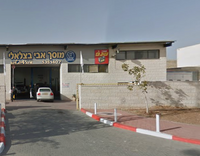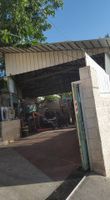Air conditioning recharge in Jerusalem District
213 companies found
- Car Service
- Closed Will open at 07:30
- Jama Abadin, Jerusalem
English ,Hebrew

- Car ServiceAuto parts
- Closed Will open at 08:00
- Atarot/HaTamrukim, Jerusalem
English ,Hebrew
- Car Service
- Closed Will open at 08:00
- Ugda 30, Maale Adumim
English ,Hebrew
- Car Service
- Closed Will open at 08:30
- HaTa'asiya St 2, Jerusalem
English ,Hebrew

- Car Service
- Closed Will open at 07:30
- Harashei Barzel St 5, Jerusalem
English ,Hebrew
- Car Service
- Closed Will open at 08:00
- Yad Harutsim St 4, Jerusalem
English ,Hebrew
- Car Service
- Closed Will open at 08:00
- Matityahu
English ,Hebrew
- Car Service
- Closed Will open at 07:30
- HaUman St 19, Jerusalem
English ,Hebrew
- Car Service
- Closed Will open at 07:30
- Prigan St 5, Ma'ale Adumim
English ,Hebrew
- Car Service
- Closed Will open at 08:00
- Ya'akov Eliav St 4, Jerusalem
English ,Hebrew

- Car Service
- Closed Will open at 07:30
- Ha-Yasmin St 11, Abu Ghosh
English ,Hebrew
- Car Service
- Closed Will open at 07:30
- HaOrgim St 17, Be'er Sheva
English ,Hebrew
Air conditioning recharge
The air conditioner should be recharged with the freon specified in the car technical documents. Before recharging, clean the cavities of the radiators with special agents and remove air and residual vapors from the air conditioner. It is required to use metrological station, hoses, adapters, a coupling connecting a pressure gauge for recharging. The procedure for recharging freon is as follows: clean and open the low pressure line section of dirt, attach a hose to the charging adapter, start the engine and maintain it at a certain speed, make sure that air recirculation works at maximum, open the low pressure line valve and the valve of the refrigerant cylinder. As the air conditioner is recharged, the pressure gauge is monitored. In the end, cold air begins to flow into the passenger compartment.